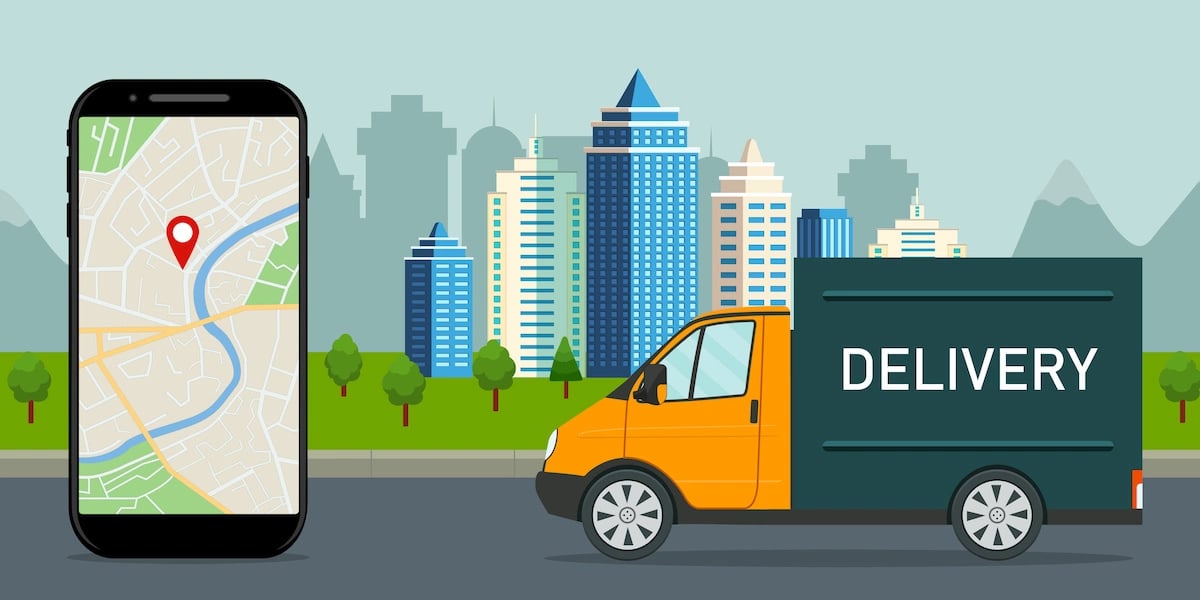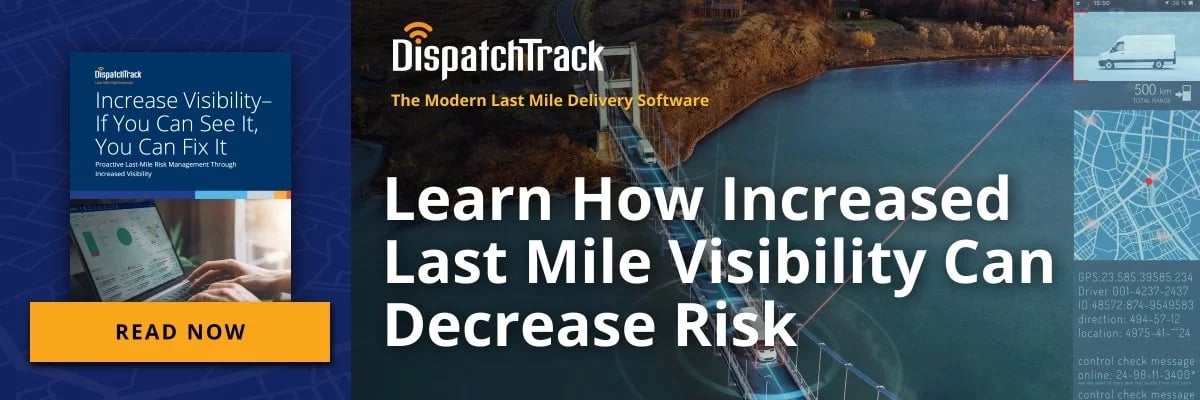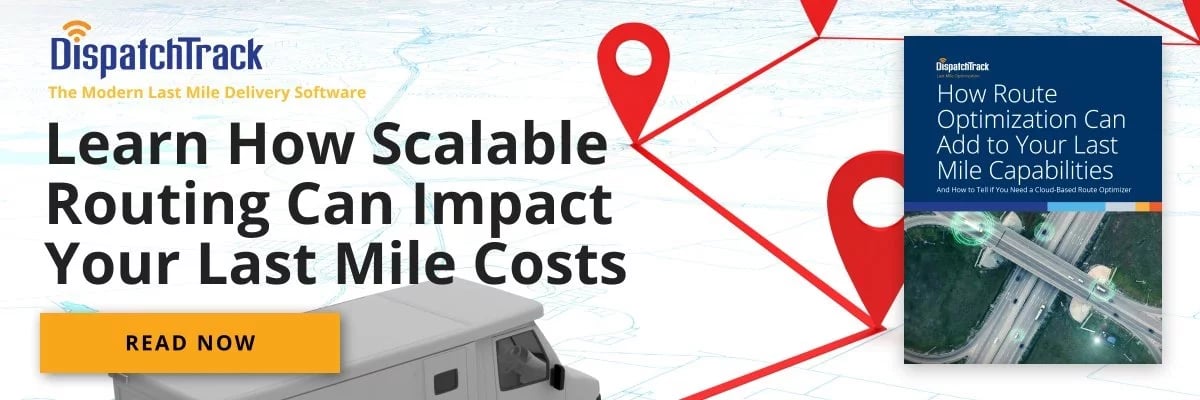Getting the Most out of Delivery Route Planning Software
8 Minute Read
In the past, customers didn’t expect much from the average retailer in terms of final mile delivery service. They may not have been thrilled with long lead times and uncertainty, but it was par for the course. Consumers generally accepted it unless something went seriously wrong.
These days, customer service expectations are such that the old ways of doing things simply don’t cut it. Luckily, modern delivery planning software is changing the way delivery businesses manage their fleets and work to meet new consumer demands.

Of course, some of the credit for this shift goes to the rise of e-commerce. Changes in buying habits in recent years have altered consumers' expectations forever. Modern businesses need to find efficient routes with reliable ETAs to meet this consumer demand.
The traditional ways of planning routes are far from ideal on this front. Why? Because they cannot account for all of the manifold factors affecting delivery times.
Scheduling and route planning are complex processes. To achieve efficient routes and schedules, you need to factor in driver capacity, weather, customer availability, traffic, load and truck types, and much more. All of this is quite difficult by hand.
Delivery planning software, on the other hand, allows businesses to keep track of all the variables affecting deliveries. In this way, it empowers fleet managers to make data-driven decisions to ensure timely deliveries and cost-effective operations.
The Basics of Delivery Route Planning
At the simplest level, route planning is the process of finding the most efficient and cost-effective routes. The aim is to maximize the number of stops per route while minimizing the time it takes to deliver each order. These days, most businesses use some kind of delivery route planner app to determine the optimal routes.
Businesses have to consider a large number of related factors to achieve high customer satisfaction and low operating costs. Not only that, but they need to successfully communicate real-time route information to customers. This is a tall order. But ensuring that delivery drivers have efficient routes can help improve fleet safety, cut down fuel and labor costs, and lower overall operating costs for businesses.
Delivery Routing Challenges with Traditional Planning
Traditional routing methods make it increasingly difficult for modern businesses to remain competitive in the marketplace. After all, modern enterprises have to cope with fast-changing customer demands, increasing operating costs, and faster delivery turnaround expectations. Manual route planning strategies simply cannot keep up with these new business needs.
Route planning by hand that involves long hours and spreadsheets won't cut it. It will never enable you to provide drivers with efficient routes and customers with accurate expected time of arrivals (ETAs). Below are some of the challenges that tend to come with traditional route planning.
Poor visibility
Real-time visibility allows businesses to keep tabs on their drivers to proactively prevent problems. But traditional route optimization doesn’t afford you any opportunities to gain real-time visibility into delivery operations. Lack of visibility results in missed and mishandled deliveries, failure to meet customer expectations, and increasing operating costs.
What's important to note here is that true visibility goes beyond simple GPS tracking. To really gain an understanding of what's happening in the field, you need a lot more. You need status updates, you need live proof of delivery feeds, and you need live ETA updates. When you have all this, you're less like to be caught off guard by exceptions.
Lack of automation
Routing, scheduling, and managing deliveries by hand is incredibly time-consuming. The absence of automation here tends to make life harder for fleet managers and executives. Especially when they need to stay flexible and agile while mapping out cost-effective strategies.
Higher fuel costs
Traditional route planning often fails to provide the most efficient routes. The result is that businesses aren’t able to cut down on fuel costs. After all, fuel usage scales with miles driven. The less efficient your routes, the more miles you have to drive per stop.
And it's not just a matter of miles-per-stop. You also expend extra fuel on re-delivery attempts after failed deliveries. When your route optimization process doesn't equip you with accurate ETAs, failed deliveries are that much more common.
Lack of efficiency
The lack of visibility, optimization of resources, and cost-effective route planning ultimately tends to result in low fleet productivity. Conventional route planning methods are unable to keep up with modern businesses' needs. Cost-effective deliveries, accurate ETAs, and optimal customer experiences are hard to achieve without the latest technology.
The result is that you can't get as much out of your delivery capacity as you should. You wind up paying more for each delivery in terms of labor and fuel costs. At the same time, planning labor costs are higher, as are the costs that come with customer-facing disruptions.
Delays and missed deliveries
Lack of real-time information on fleets and real-time conditions affecting delivery times inevitably leads to missed or late deliveries. This is to say nothing of inaccurate ETAs, which can irritate customers even without leading to a failed delivery.
We mentioned above that missed deliveries drive up fuel prices, but they can have other impacts. For one thing, there's the labor costs that come with re-delivery attempts. At the same time, it makes it harder to retain customers. Customer acquisition is much more expensive than customer retention, so this is hardly a winning formula.
Low customer satisfaction
Shoppers now demand real-time information regarding their packages for delivery. Conventional route planning fails to offer customers real-time data on drivers' location and accurate ETAs. The lack of reliable information means customers won't be informed of any delays. Like we said above, this will ultimately lead to low customer satisfaction, and an increased likelihood that the customer isn’t at home.
After all, it's not just delays that can cause dissatisfaction. Customers want a holistic experience that inspires trust and repeat business. Routing can be a big part of that if it's fully integrated with your larger delivery processes.
How Delivery Route Planning Software Helps
Delivery route optimization software helps businesses find the most cost-effective routes given their identified constraints. The right tool can go a long way towards helping businesses save time, reduce costs, and ensure higher productivity. The trick is using both real-time and historical data when finding optimal schedules and routes,
Here's how the best route planning software can help:
Automated route planning
The right routing software can find the most cost-effective routes by factoring in various constraints with just a few clicks. Just set your constraints, parameters, service time estimates, etc. and let a powerful AI-powered platform do the work for you. You may wind up making adjustments to the plan, but it will be faster than doing the process by hand. Best of all, the system will be able to estimate ETAs much more accurately than a human planner.
When you're able to save time on the actual routing exercise in this way, you focus some of that energy elsewhere. For instance, you could tackle more strategic questions about topics like the design of your transport network. Simply put, the more quickly you're able to generate efficient routes, the more easily you can begin to boost efficiency elsewhere.
Improved ETAs
Generating accurate delivery ETAs by hand can get tricky as soon as you add a more than a few parameters. It's difficult to account for changing traffic patterns over the course of the day. And differences in service time for different deliveries adds an extra layer of complexity. Historically, this is one of the reasons that consumers used to be stuck with 6 hour delivery windows.
But modern route optimization software gives you the power to easily account for these parameters and generate highly-accurate ETAs. Often, the best way to do this is to leverage AI and machine learning to learn service times and traffic patterns over time. By analyzing huge caches of delivery data, these algorithms can create incredibly precise predictions that improve over time.
In this way, you can develop ETAs that are 98% accurate. This goes a long way towards increasing delivery efficiency. For one thing, it improves the customer experience, reducing not-at-homes and failed deliveries. For another, it enables you to get the absolutely most out of your delivery capacity.
Real-time visibility
Fleet managers that can easily track drivers' locations and activities in real-time have better control of fleet operations. Real-time monitoring and visibility enable fleet managers and dispatchers to see disruptions and exceptions in real time. From there, you can take steps to address the situations proactively.
Traditionally, this might not seem like the purview of a routing solution. But modern routing solutions are equipped with AI and machine learning algorithms that can accurately predict ETAs. When you can do that, you can turn real-time delivery updates into actionable insights.
For starters, you can provide more accurate ETA information to your customers right off the bat. Over the course of the delivery, you can send real-time updates as the ETAs change. This improves customer experience and decreases the odds of a not-at-home.
Then, internally, you can use those live ETA calculations to spot exceptions in real time. From a delivery tracking dashboard, you can visualize each route as it unfolds and see ETAs that are entering late territory. When a potential late delivery crops up, you can act quickly to resolve the situation.
Effective communication
Delivery planning software allows internal teams to communicate more seamlessly and effectively. That's especially true when the software package includes an easy-to-use driver mobile app. Drivers can get their job assignments for the day, route plans and sequence, and additional instructions or updates from dispatchers or fleet managers via the mobile app. Meanwhile, dispatchers can automatically communicate with customers regarding delivery schedules.
Like we saw with the real-time visibility section above, this is a testament to how important a holistic solution is. When your route planning happens in a vacuum, it's hard to translate your route plans into customer communications. Conversely, a solution that includes both routing and customer communications makes this easy.
For starters, you can automatically notify customers of their delivery schedules as soon as they've been routed. From there, you can send automated updates via text and email once the route starts. In a perfect world, you'd be able to offer real-time delivery tracking from a dedicated customer portal.
Here, the routing engine would automatically update the delivery ETA based in the latest information. In this way, you can create the backbone of a customer experience that inspires trust and delights customers.
Electronic proof of delivery
The right delivery software should also enable delivery teams to capture electronic proof of delivery. This should include time stamped signatures, images, videos, and notes. This can go a long way towards enabling you to fight off false liability claims. By the same token, it can speed up time to revenue and help drivers get paid out more quickly.
Continuous improvement
Advanced delivery route planning apps use machine learning algorithms that can learn about delivery operations. By analyzing past data, e.g. in order to improve delivery time estimates, it can improve overall efficiency and customer experience. With the right analytics and reporting capabilities, you can constantly strive for smarter operations.
At the end of the day, the right delivery planning software can help improve delivery efficiency and fleet productivity. Not only that, but it can help lower operating costs and meet increasing customer demands. The trick is to choose the right solution for your business.
You may also like
Subscribe now
for a weekly blog digest containing growth tips, industry updates, and product announcements!

